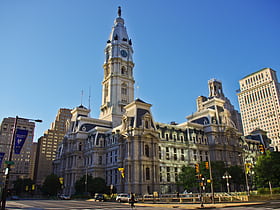Philadelphia: William Penn
Places and attractions in the William Penn category
Categories
- Museum
- Church
- History museum
- Park
- Bridge
- Historical place
- Gothic Revival architecture
- Theater
- Neighbourhood
- Concerts and shows
- Specialty museum
- Monuments and statues
- Cemetery
- Art museum
- Nightlife
- Georgian architecture
- Shopping
- Library
- Music venue
- Sacred and religious sites
- Art gallery
- Synagogue
- Area
- Colonial revival architecture
- Concert hall
- Architecture
- Greek Revival architecture
- Music and shows
- Memorial
- Street
- Shopping centre
- Skyscraper
- Neoclassical architecture
- Universities and schools
- Science museum
- Romanesque architecture
- Performing arts
- Garden
- Square
- Ship
- Postmodern architecture
- Playground
- Sport
- Sport venue
- Natural history museum
- Reportedly haunted
- Palladian architecture
- Sculpture
- Golf
- Vernacular architecture
- Bars and clubs
- William Penn
- Italianate architecture
- Temple
- Arenas and stadiums
- Botanical garden
- Tower
- Art Deco architecture
- Romanesque revival architecture
- Beaux-Arts architecture
- Modernist architecture
- Basketball
- Tudor Revival architecture
City Hall
Massive, ornate government buidling Philadelphia City Hall stands as a grand architectural masterpiece and the seat of government for the city of Philadelphia, United States. Constructed in 1901, this magnificent structure holds the distinction of being the largest municipal building in the country...
Comcast Center
The Comcast Center, soaring above the skyline of Philadelphia, is an emblematic skyscraper that defines the city's modern architectural landscape. Standing at 975 feet, it is the tallest building in Philadelphia and the state of Pennsylvania.
Penn Treaty Park
Penn Treaty Park is a small park on the western bank of the Delaware River, in the Fishtown neighborhood of Philadelphia, Pennsylvania. It is located on Beach Street, near its intersection with Delaware Avenue.
Germantown
Germantown is an area in Northwest Philadelphia. Founded by German, Quaker, and Mennonite families in 1683 as an independent borough, it was absorbed into Philadelphia in 1854.
Map




